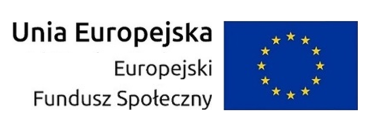Applying non-Euclidean geometries to Social Network Analysis
- Prelegent(ci)
- Dorota Celińska-Kopczyńska
- Afiliacja
- Wydział Nauk Ekonomicznych, UW
- Termin
- 30 maja 2019 10:15
- Pokój
- p. 4050
- Seminarium
- Seminarium „Ekonomia algorytmiczna”
Most data analysts take it for granted to use some subregions of a flat space as their data model, which means utilizing constructs that follow the principles of the Euclidean geometry. However, it is not the only option. We may use non-Euclidean geometries. The first of them, and probably the most famous one, is the hyperbolic geometry, discovered by Gauss, Lobachevsky, and Bolyai. While hyperbolic geometry is not common in our world (typical examples include coral reef or lettuce), the second kind of non-Euclidean geometry is more common—that is, the geometry of the sphere. In this presentation we will discuss what the benefits are and how to apply non-Euclidean geometries into Social Network Analysis. By the assumption that the underlying geometry is non-Euclidean, we obtain a new degree of freedom for the techniques of analysis which translate the similarities into spatial neighborhood relationships. Recently, it was shown that hyperbolic geometry is intrinsic in many real-world networks and especially useful while modeling large scale-free networks based on similarity and popularity. One of the properties of this geometry is that the amount of the area in the distance d from a given point is exponential in d; intuitively, the metric structure of the hyperbolic plane is similar to that of an infinite binary tree, except that each vertex is additionally connected to two adjacent vertices on the same level. However, usually implemented continuous models have substantial drawbacks. Therefore, we will present a discrete analogue of Hyperbolic Random Graphs. Non-Euclidean geometries are not only useful for the visualization purposes. We will show how to use underlying topological information in modeling homo- or hete-rophily in networks with non-Euclidean Self-Organizing Maps. Exponential growth which characterizes hyperbolic geometry affects the visualization and modeling of the neighborhoods in data: objects sharing the same properties tend to be mapped close together. The resulting spatial locations have intepretation that may be used in further analyses. The theoretical propositions will be applied to examples of real-world networks, especially those originating from GitHub repository hosting service.
 Nie jesteś zalogowany |
Nie jesteś zalogowany |



















